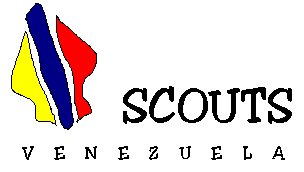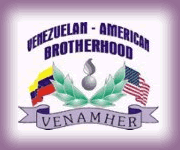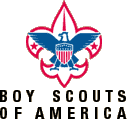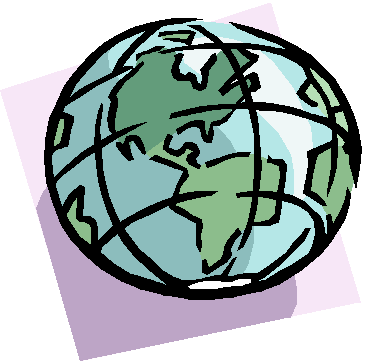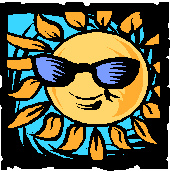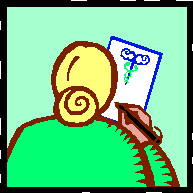
Introduction
Our children are often faced with choices that affect their development and safety. As parent, we can do our best provide education and guidance to prepare our children to make the best decisions. One way we do this is to talk with our children. Some subjects are easy to discuss with our children. Some subjects are easy to discuss with our children -sports, their grades in school, their friends and many others features of out daily lives-. Other things are more difficult for us to discuss, including child abuse - especially child sexual abuse-.
Although discussing child abuse with your children may be difficult for you, it is very important. Perhaps the most important step parent can take to protect their children from abuse is to have open communication in the home. Research has show that children whose parent talk to them about preventing abuse are more effective at fending off assaults. Your is very important.
More than three millions reports of child abuse are received each year, in U.S.A., including half a million reports of child sexual abuse. As a major youth-serving organization, the Boy Scouts of America has a unique opportunity to help protect the youth of our nation. This booklet is designed to give you essential information that should help you teach your children how to protect themselves.
If your son is a new Boy Scout, this might be the first time that you have seen this Parent's Guide. If you have other sons in Scouting, or if your son has advanced in Boy Scouting, we hope that you are familiar with this guide and have discussed its contents with your children. In either case, we encourage you to make this information part of a continuing family effort that reinforces the concept included in this guidebook.
We do not expect that your son will become a victim of child abuse. It is extremely important, however, that if he is ever confronted with an abusive situation, he will know that there are adult in his life who will listen and respond in a supportive manner. The purpose of this booklet is to help you and yours son establish, or reinforce, open communication on this sensitive topic.
Section I
Information for Parents
Using This Booklet
This Booklet is divided into two sections. The first section is your information. It contains information about child abuse and provides some tips to help parents talk with their Boy scout-age sons about child abuse. The second section is for you to share with your son. Some of the activities listed in the second section are requirements your son needs your help to complete before he can his Boy Scout troop.
Youth Protection Troop Joining Requirement: For your son to join a Boy Scout troop, he must complete the exercises included in Section II of this pamphlet.
It is important that you read the entire booklet before you and your son do any of the exercises together. You might be tempted to hand this booklet to your son and tell him to read it. We urge you to resist this temptation. Your son needs to know that he can openly discuss difficult topics with you.
Child Abuse: Basic Information for Parents
An abused neglected child is a child who is harmed, or threatened with physical or mental harm, by the acts or lack of action of a person responsible for the child's care. There are several forms of abuse: physical abuse, emotional abuse and sexual abuse. Child neglect is a form of abuse that occurs when a person responsible for the care of a child is able, but fails, to provide necessary food, clothing, shelter, or care. Each state has its own definitions and laws concerning child abuse and child neglect.
Child abuse and neglect are serious problems for our society. The number of cases reported has increased each year since 1.976, when statistics were first kept. brief discussions of each form of abuse are presented below.
Neglect: A child is neglected if the persons this child depends on do not provide food, clothing, shelter, medical care, education, and supervision. When these basic needs are deliberately withheld, not because the parents or caregivers are poor, it is considered neglect. Often parents or caregivers of neglected children are so overwhelmed by their own needs that they cannot recognize the needs of their children.
Physical Abuse: Physical Abuse is the deliberate injury of a child by person responsible for the child's care. Physical abuse often stems from unreasonable punishment, or by punishment that is too harsh for the child. Sometimes it is the result of a caregiver's reaction to stress. Drinking and drug abuse by caretakers have become more common contributing factors in physical abuse cases. Physical abuse injuries can include bruises, broken bones, burns and abrasions. Children experience mirror injuries as a normal part of childhood, usually in predictable places such as the shins, knees, and elbows. When the injuries are in
soft tissue areas of the abdomen or back, or don't seem to be typical childhood injuries, physical abuse becomes a possibility. Physical abuse happens to children of all age group, however, youth ages 12 to 17 have the highest rate injury from physical abuse. This is possibly due to increasing conflict between parents and children as children become more independent.
Emotional Abuse: Is harder to recognize, but is just as harmful to the child as other forms of abuse. Emotional abuse damages the child's self-esteem and, in extreme cases, can lead to development problems and speech disorders. A child suffers from emotional abuse when constantly ridiculed rejected, blamed, or compared unfavorably with brothers or sisters or other children. Expecting too much from child in academics, athletics, or other areas is a common cause of emotional abuse by parents or other adult. When a child can't meet these expectations, the child feels that he or she is ever quite good enough.
Sexual Abuse: When a adult or a older child uses her or his authority over a child to involve the child in sexual activity. it is sexual abuse, and that person is a child molester. The molester might use tricks, bribes, threats, or force to persuade the child to join in sexual activity. Sexual abuse includes any activity performed for the sexual satisfaction of the molester, including acts ranging from exposing his or her sex organs (exhibitionism), observing another's sex organs or sexual activity (voyeurism), to fondling and rape.
Here are a few facts you should know about child sexual abuse:
-Child sexual abuse occurs to as many as 25 percent of girls and 14 percent of boys before they reach 18 years of age.
-Boys and girls could be sexually abused at any age, however, most sexual abuse occurs between the ages of 7 and 13.
-Children are most likely to be molested by someone they know end trust.
-Eighty to ninety percent of sexually abused boys are molested by acquaintances who are
non family members.
-Females perform 20 percent of the sexual abuse of boys under age 14
(pre pubescent).
-Few sexually abused
children tell anyone that they have been abused. Children are usually told to keep the abuse secret. This could involve treats, bribes or physical force.
-Children might feel responsible for the abuse and fear an angry reaction from their parents.
Preteen and teenage boys are especially at risk for sexual abuse. The physical
an hormonal changes caused by puberty, and their natural curiosity about their
new emotions and feeling, make these youth likely targets for child molesters.
The normal desire of boys this age to show their independence from their
parents' control adds to the risk. This combination might keep boys this age
from asking their parents for help when faced whit sexual abuse.
Sexual Molestation by Peers: Approximately one-third of
sexual molestation occurs at the hands of other children. If you child tells you
about club initiations in which sexual activity is included, or if your child
tells you about inappropriate or tricked, pressured, or forced sexual
activity by other children, this is a form of sexual abuse, and you need
to take steps to stop the activity. This kind of sexual misconduct is serious
and should not be ignored.
Children who molest other children need professional help. They
are much more likely to respond to treatment when young than adults who were
molesters as children and received no treatment, and continue to molest children
as adults.
Parents and other adults who work with children need to
distinguish between sexual behavior that is a normal part of growing up, and
sexual behavior that is a abusive. If you find your child has engaged in sexual
behavior that might not be abusive, but which bothers you, use the
opportunity to discuss the behavior and help your child understand why it
bothers you.
Sing of Sexual Abuse: The best sign that a child has been
sexually abused is his statement that he was. Children often do not report their
abuse, so parents should be alert for other signs. These are some signs to watch
for:
-Hints, indirect messages (refusing to go to a friend's or
relative's home for no apparent reason, for example, "I just don't like him
anymore").
-Seductive or provocative behavior (acting out adult sexual
behavior or using sexual language a child his age is unlikely to know).
-Physical symptoms (Irritation of genital or anal areas).
The following are common signs that children are upset. If
present for more than a few days, these signs could indicate that something is
wrong and your child needs help and parental support. They might also be sings
that your child is being sexually abused:
-Self-destructive behavior (using alcohol or drugs, deliberately
harming himself, running away, attempting suicide, or sexual recklessness or
promiscuity).
-Unhappiness (undue anxiety and crying, sleep disturbances, or
loss of appetite).
-Regression (behaving like a younger child, thumb sucking, or
bed-wetting).
Difficulty at school (Sudden drop in grades, behavioral
problems, or truancy).
Preventing Child Abuse
Except for sexual abuse of boys, the great majority of child
abuse occurs within families. Prevention efforts for emotional and physical
abuse as well as neglect generally focus on helping abusers, often the parents,
change their behavior.
Some physical and emotional abuse are reactions by parents to
the stresses in their lives. By learning to recognize theses stresses, and then
taking a time-out when the pressures mount, we can avoid abusing those we love.
The next section lists some alternatives to physical and emotional abuse for
overstressed parents. These suggestions come from the National Committee to
Prevent Child Abuse.
In addition to the alternative on the next section,
parents and other child caregivers may want to think about the following
questions suggested by Douglas Besharov, the first director of the U.S.
National Center on Child Abuse and Neglect, regarding the methods of discipline
they use.
-Is the purpose of the punishment to educate the child or to
vent the parent's anger?
-Is the child capable of understanding the relationship between
his behavior and the punishment?
-Is a less severe, but equally effective, punishment available?
-Is the punishment degrading, brutal or extended beyond the
limits of what the child can handle?
-If physical force is used, is it done carefully to avoid
injury?
These questions help to define the boundaries between acceptable
discipline and child abuse. Other cause of child abuse inside the family might
be much more complex and require professional help to resolve.
Alternatives to Child Abuse
Send e- mail to Group Chairman
- [email protected]

